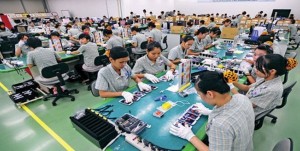Aiming to make India a global electronics manufacturing hub, the government on Wednesday hiked the allocation for the Modified Special Incentive Package Scheme (M-SIPS) and the Electronics Development Fund (EDF) to “an all-time high” of Rs 7.45 billion— a move welcomed by some of the leading smartphone players.

“A number of global leaders and mobile manufacturers have set up production facilities in India. I have, therefore, exponentially increased the allocation for incentive schemes like M-SIPS and EDF to Rs 7.45 billion in 2017-18. This is an all-time high,” Finance Minister Arun Jaitley said while presenting the Union Budget 2017-18.
“We are also creating an eco-system to make India a global hub for electronics manufacturing. Over 250 investment proposals for electronics manufacturing have been received in the last two years” Jaitley added.
“The allocation of Rs 7.45 billion is a welcome move which will provide impetus to local component manufacturing in the electronics sector,” Rajesh Agarwal, co-founder, Micromax Informatics.
According to Manish Sharma, President and CEO, Panasonic India and South Asia, the budget allocated towards MSIPs and EPF looks progressive and will surely reduce dependency on imports in the industry.
The M-SIPS scheme provides capital subsidy of 20 per cent in SEZ (25 per cent in non-SEZ) for units engaged in electronics manufacturing. It also provides for reimbursements of countervailing duty(CVD)/excise for capital equipment for the non-SEZ units.
“We are positive that the government has increased allocation and incentives in schemes like M-SIPS and EDF that will provide the necessary push to the mobile and internet manufacturing economy,” said Arvind R Vohra, Country CEO and MD, Gionee India.
For Sudhir Kumar, CEO, itel Mobile India, the allocation has significant prospects for smartphone manufacturing brands.
“The Finance Minister has included provisions meant to boost electronic manufacturing by promoting M-SIPS and EDF. Such policies would promote indigenous manufacturers and attract innovation and technology prowess engineered by foreign countries,” Kumar noted.
By Baishakhi Dutta



























